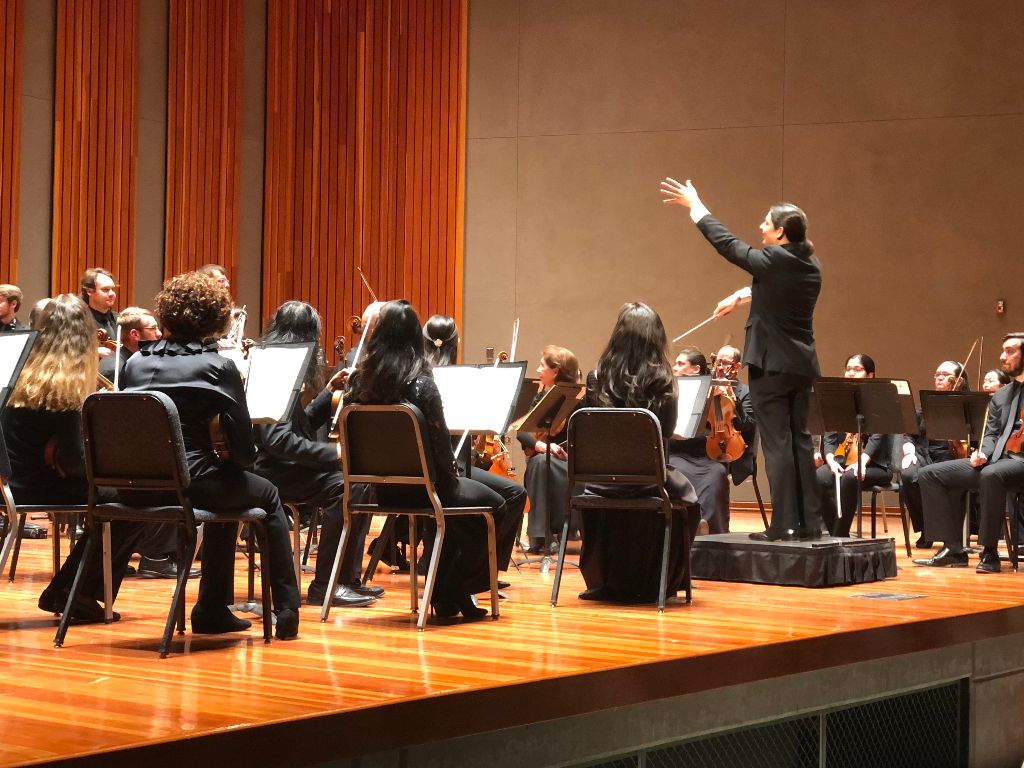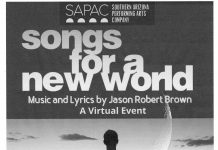The latest offering by the Tucson Symphony Orchestra came with a world premiere: Imagining the Dance by Dan Coleman, the symphony’s composer in residence. For this concert, held at the Catalina Foothills High School auditorium, the size of the orchestra was pared down.
“This is my favourite incarnation of the orchestra,” said Coleman. “It is more fun to write for a smaller group of instruments. Getting a vibrant and colourful expression from the orchestra is fun for me, but it is also a great challenge to write for the smaller orchestra Beethoven would have been used to.
“My very short concert overture is based on a concept which some of you may have experienced yourself, involving the merging of music with the visual arts and dance. It is a mysterious thing to me to see a choreographer work in silence. Seeing a choreographer come up with movement in silence has its own kind of music. What would it sound like? My piece has a pulsating idea that comes to fruition. You can also hear Beethoven composing: he ruminates on a short sequence until it has its own momentum. The Overture, like Beethoven’s second Symphony, has an ABA form. In my overture there is an opening gesture, then a momentum by violin and winds, then back to the opening gesture.” All in three minutes, which the TSO music director Jose Luis Gomez characterised as “a minimalistic way to deal with an orchestra of this size.”
Local music expert Conlan Salgado offered this analysis of the Overture for Sun News Tucson. “The provocation was geometric in my mind; the movement was either circular or linear and that particularly came through in the strings. This was, I felt, a strong testament to the fact that the piece was inspired by the idea of dancing.”

Coleman admits his audience is not the audience who pays to hear the music. “I like to write for my friends, people I admire for their musical talents. I write for the musicians first, not people in the hall.” With “rhythm and tonality all over the place” as one audience member told me, and with only three minutes to present the concept, the orchestra members may very well have left the hall with a remembrance of this Overture, but after hearing two symphonies by Beethoven I doubt anyone else remembered it at all. And since it wasn’t written for them, who can blame them? I can only say that premiering a new work in the presence of overwhelming genius was audacious.
Beethoven’s Symphony No. 8 was next. Five notes herald the ‘melody of discovery’ at the outset. The 6th Symphony also shares this characteristic, which for the composer is quite unconventional. Most of his compositions are framed as musical explorations, but here the musical idea is boldly stated during a very intense few minutes at the opening, relieved only by a light-hearted passage for some 30 seconds. Emphatic drum beats and rapid notes from the entire orchestra imparts a breathless feeling, like going down a ski slope in a James Bond film.
The more tentative brushstrokes of the second movement are akin to moving from a sable to a hoghair brush, as the English painter Lucien Freud did over the course of his artistic career. From the sharply defined image Beethoven paints in the first movement, in the second we are presented with broad scoops and whorls, governed by a consistent rhythm on the woodwinds that was inspired or regulated by a gadget that was new to Beethoven in 1812: a metronome. It is upon this canvas that Beethoven moves to the third movement with a sweeping melody of precise musical diction. Things are taken to a galloping conclusion in the fourth movement. I am certainly in the minority by accepting the 8th Symphony’s expository (as opposed to exploratory) nature as my favourite, made all the more special as the Tucson Symphony Orchestra did such very fine interpretation.
Beethoven’s 32-minute-long Symphony No. 2 filled the second half of the concert. It begins with a veritable cascade of notes falling not into the placid Danube but a roiling river. We are carried away by the churning rapids, tossed this way and that, drenched in spray but never in fear of drowning. This is an exhilarating ride!
The second movement is all sweetness and light in comparison. The bubbly waters are now not in a river but a champagne glass. Beethoven literally tickles our nose with the fizz at the conclusion. The third movement is dominated by a surging melody, like the crests of a wave.
I will let Conlan describe the fourth movement: “It seems that his struggle for his own uniqueness is suppressed until the final movement, which is one of the most shocking movements in any of his symphonies. It is monumentally important in his music, as it is the ultimate moment in which ‘Beethoven the revolutionary’ is born. It utterly obliterates the musical conventions of his day. In this sense, it is the movement that launched the romantic period of music, and the artistic revolution that has still not come to an end today.” This concert was certainly a fine way to celebrate the 250th birthday of Beethoven, born in 1770.
Visit the Symphony website for tickets to future concerts: tucsonsymphony.org
Photos by C Cunningham














